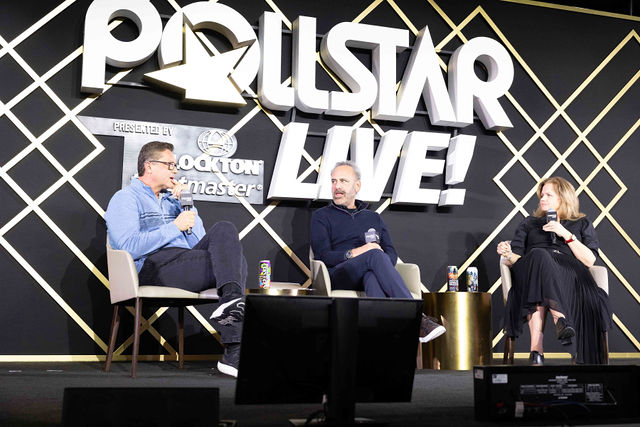
Panelists
Joe Kessler, UTA
Shelley Pisarra, Wasserman
André Vargas, CAA
Many in the live entertainment business have a few stories of how going with their gut helped them and an artist succeed in a particular market during a specific time. Such anecdotes are the ones people love to hear about at Pollstar Live!, the largest gathering of live industry professionals, but the many other decisions made by booking agents aren’t so much driven by feeling but by data compiled from many sources. It may not sound as romantic as going with one’s instinct, but in a digital world with social media and streaming platforms, data-driven decision-making is what can propel artists to another level in their careers.
Executives from three of the industry’s top agencies closed out the 2024 edition of Pollstar Live! on Thursday with the “Rainmakers III: Turning Data Into Actional Artist Insights” panel to discuss their strategies on how to gather information and use it to your client’s advantage.
“If we were having this conference probably eight or nine years ago, there would be no such thing as this panel because the use of data analytics has accelerated and matured so dramatically here in the last six or eight years — to the point that for most it’s become a very essential element of what we do,” said Joe Kessler, partner and global head of UTA IQ, which is United Talent Agency’s analytics, research and strategy division.
Analytics is a popular term in the sports world, but it’s just as important if not more so in artist development. On top of gathering data from touring, streaming and social media, agents look at consumer behavior and how it can somehow relate to the artist they represent, which can help the artist develop a brand as well as partnerships.
“To do that, you can imagine we’re all looking at so much data and information, pulling that together, but really trying to pull out those most salient points,” Shelley Pisarra, Wasserman’s executive vice president of global insights, said. “So, as we go into negotiating and put partnerships on the table, we’ve not only identified a space that’s unique to the brand and the artist at hand, but we’ve now laid out a map of potential based upon who that common audience is, the value that they can ultimately bring and then hopefully we can bring a deal together and maximize that value.”
The main challenge in pulling such data to help clients is simply that there’s too much of it, and another hurdle is that many companies, particularly streamers, do not share their statistics. The agencies have developed strategies to gather information from multiple sources around the globe, which will help make the best decision.
“You have to combine lots of data sources, and you also need to go beyond you know, what’s in the east or west, but what happens in Europe? What do people in the Latin countries care about? There’s always too much information,” said André Vargas, chief data officer at Creative Artists Agency. “… We need to very be very, very focused in a world of exploding data, to finding ways that optimize how that is consumed.”
One tool agencies are using to assist them in wrangling useful analytics is artificial intelligence. They are careful in not relying on it too much and have developed a system that incorporates a human element to creating for their clients.
While no one can predict the future of the industry, the agencies’ data execs can try.
“I think one of the things that really struck me that came out of that research was the degree to which the millennial audience is really driving the economics of touring these days,” Kessler said. “And we have an entire generation of people moving into their prime earning years and whose behaviors are pretty well set but seem to have evolved with a priority of investing their disposable income in experiential things like travel and particularly music.”
Pisarra seconded Kessler’s assessment and added that another factor driving audiences to attend more events is the combination of experiences, including sports, fashion, food and music.
“The opportunities of this convergence of events that were bringing in an audience that maybe wouldn’t have gone for sports alone or music alone, maybe just for art, but then they’re getting to kind of have this 360 experience,” Pisarra said. “How do we make sure we bring them back? And what does that look like for that particular artist or that combination of events? How valuable is that audience and so on so that convergence is another big thing? I think we’ll continue to see moving forward and then looking at specific genres, I think the Latin genre has really done well this year. … The construct of the U.S. and the world has changed, and access to streaming platforms, the growth of the Hispanic population has driven a lot of that as well.”
As a Latino, Vargas expressed excitement for the growth of the Latin genre, but as CAA’s chief data officer, he looks forward to the evolution of technology, specifically the advancement of wireless communications.
“I know 6G is coming, and what is the experience and the immersive experiences that we’re going to be able to have in stadiums, in concerts since everybody wants the biggest, best experience that you can imagine, but also without forgetting that there is a middle tier and a growing set of artists so all of them need to be growing in that direction?” Vargas said. “I just think this keeps growing and improving, and in terms of demand for data, I only see it exploding. … It’s never-ending, so the demand is really high, which is a signal of the golden era of touring, right?”